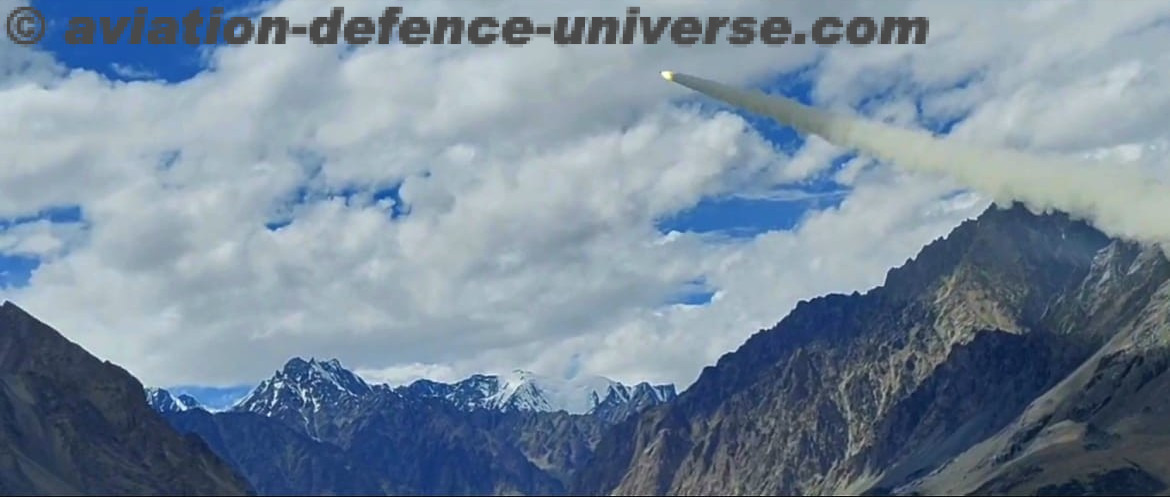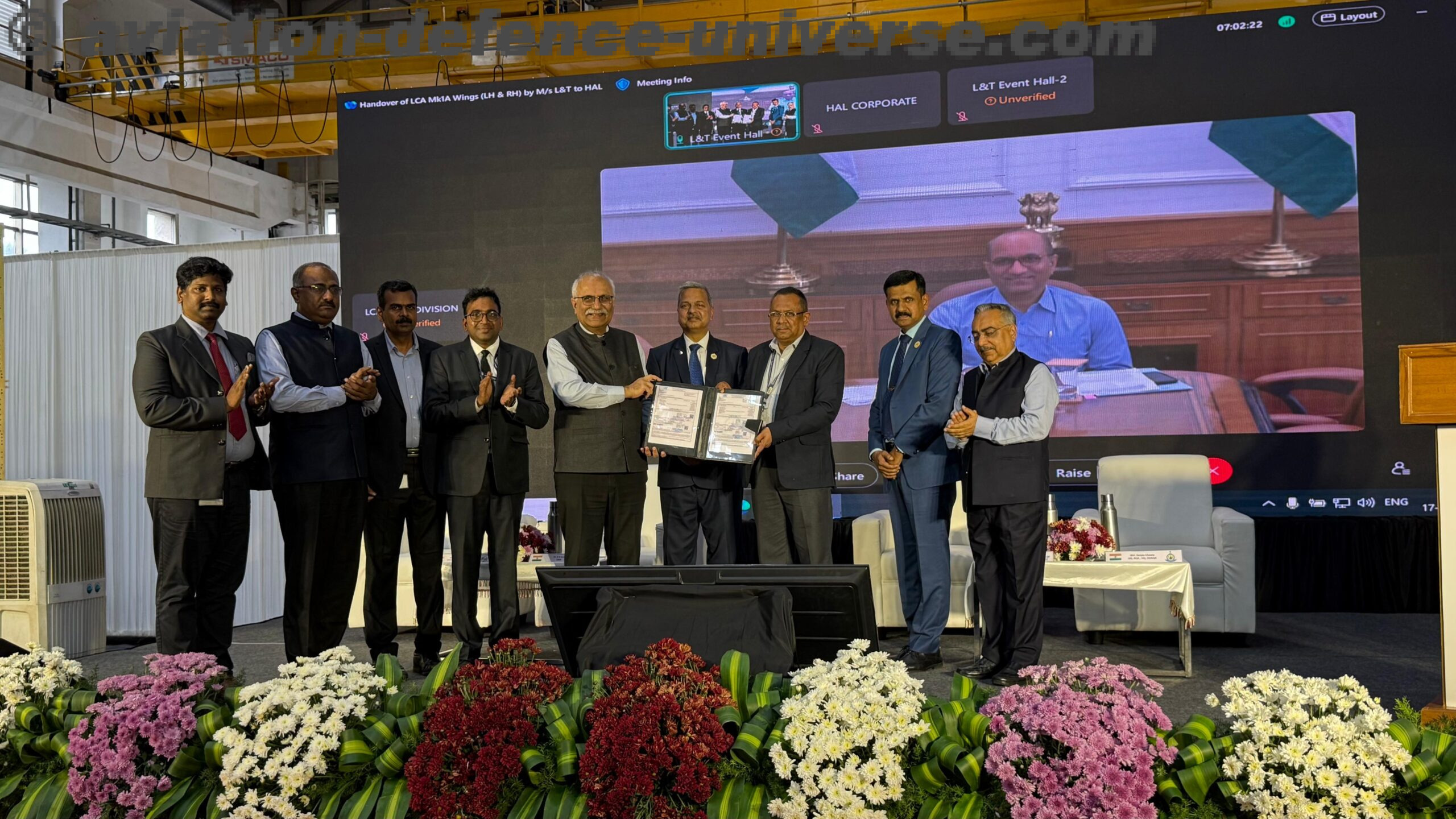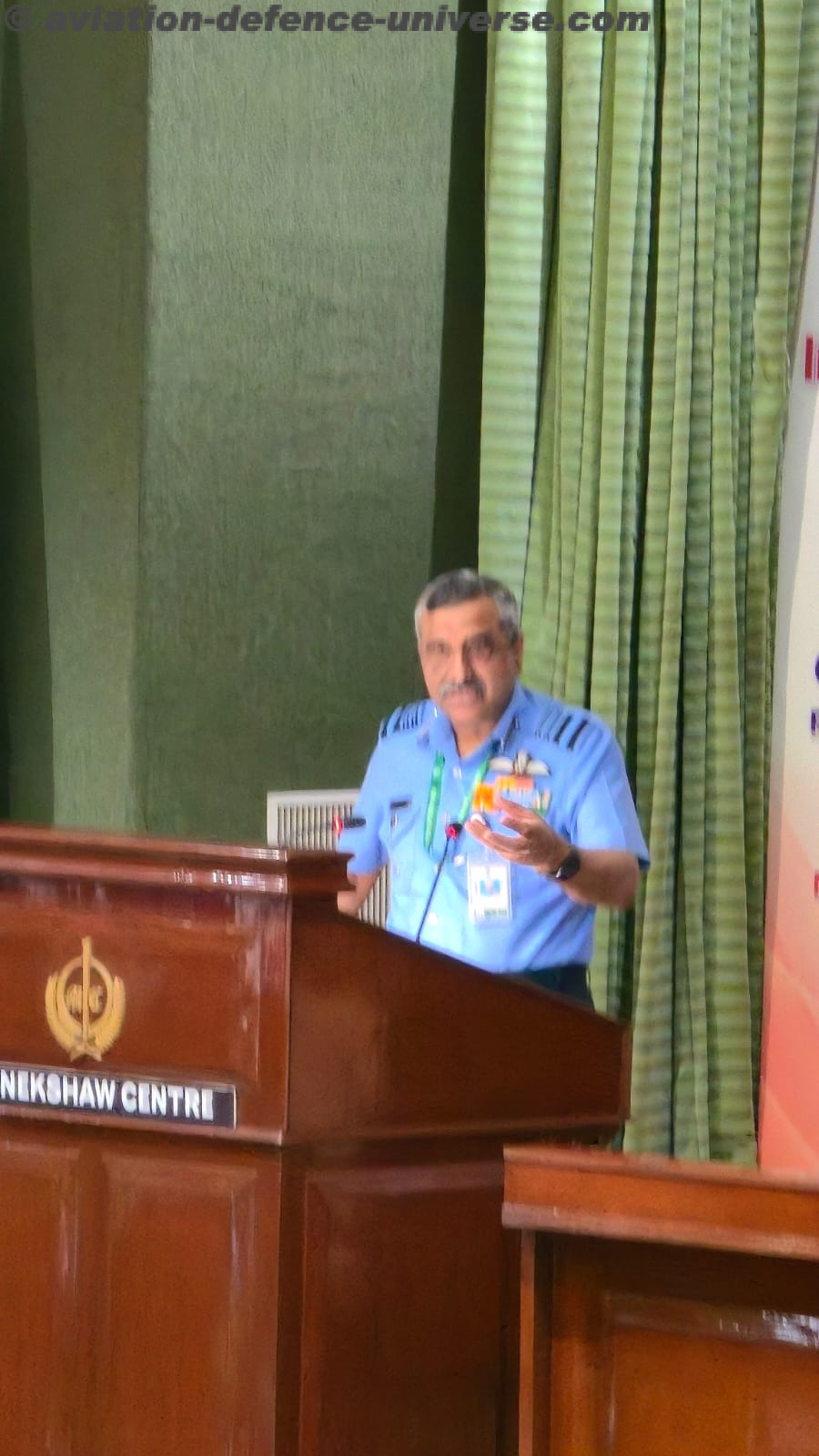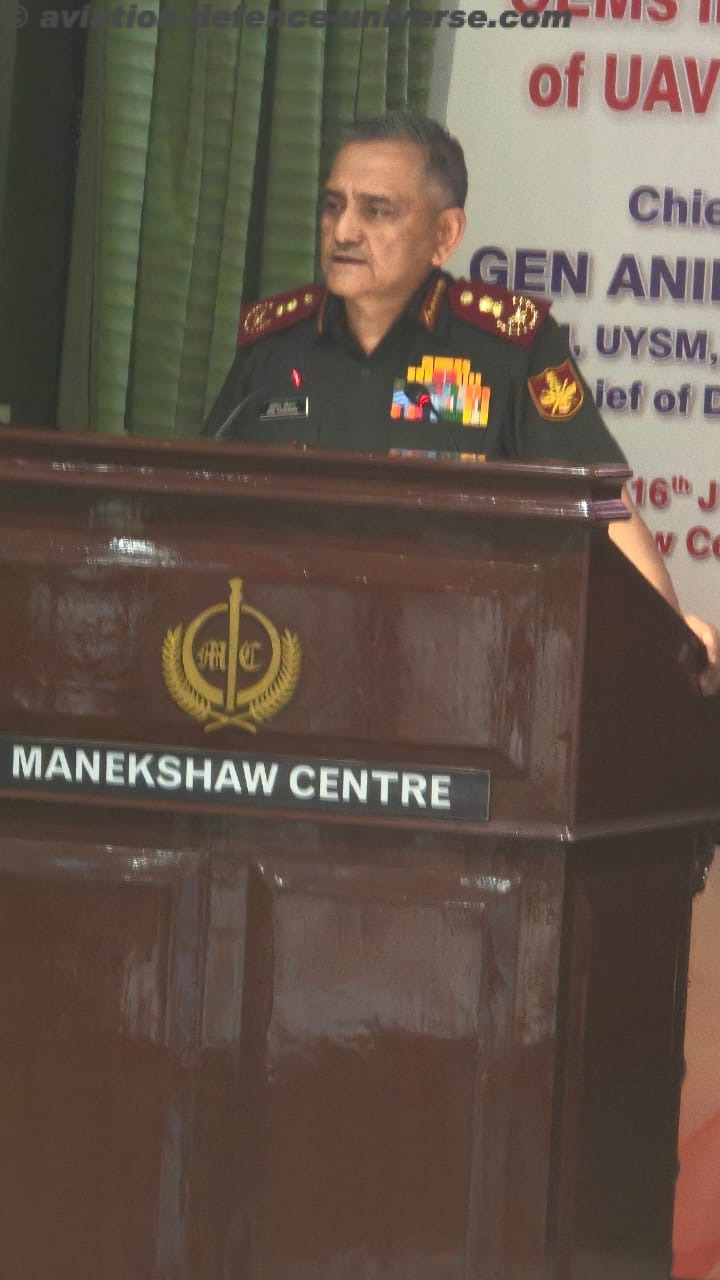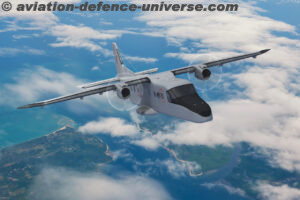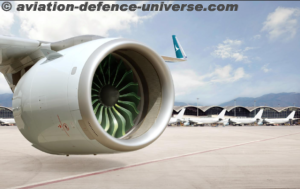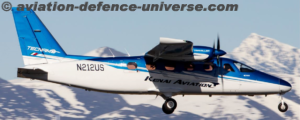New Delhi. 07 September 2022. The nature of warfare is changing and there is a move towards smaller and more numerous weapons systems which have matching or better efficacy. This trend is visible in almost all types of
weapon systems, with the most visible being the near dramatic change in aerial warfare with the
advent of Artificial Intelligence (AI) enabled Unmanned Aerial Vehicles (UAVs) or drones. In this
area of interest, process has started at HAL on its three separate components – CATS Warrior
(Teaming drone), CATS Hunter (air-launched cruise missile) and Alpha-S (glider drone), all of
which are unmanned systems but controlled by the pilot from the mothership via secure data links,
and equipped with electro-optical and infrared sensors.
Another area of importance is the proliferation of long range and very long range missiles with
terminal guidance, as exemplified by the ongoing conflict in the Ukraine. Jet engines being the
heart of multiple aerial platforms, countries have realised that an indigenous manufacturing
ecosystem for jet propulsion technology is an urgent necessity to protect their strategic interests.
All these situations necessitate developing an Indian military engine industrial base for small and
large jet engines a strategic necessity and tough choices could soon be confronting our
policymakers as to how to turn the existing capability into an execution mode. Despite all transfer
of technologies and license manufacture of aero-engines, the nation still has a long way to go in
achieving self- sufficiency in design/manufacture to enable total self reliance.
Now, with the availability of trained and world class designing skills, cheap labor, multiple offers of
co-development, a large military market for aerial platforms and a private sector willing to invest,
can we transcend this last technological barrier in indigenous jet engine development? Aero
engine development has reached a state, when it is no longer a technological curiosity and
Technology Readiness Levels (TRLs) issue, but a necessity for survival amidst geo-political
threats and fast changing strategic/tactical scenarios.
Insighteon Consulting ran an interactive war-game from 23 to 25 August 2022, with the aim of
ascertaining a roadmap for development of an aero engine eco system in India.
The analysts included retired DRDO senior scientists, leaders from the Public Sector like ISRO,
HAL, NAL, GTRE and Private Industry like Godrej Aerospace, Paninian India and Bharat Forge,
academia, retired defence officers, bureaucrats, diplomats and members of various think tanks.
The key takeaways from the on-line war-game are listed below.
Findings
Plan for development of Fighter aircraft engines and helicopter engines. Refer Appendix A
Engines under development. Refer Appendix B
Developing indigenous aero engines is a strategic necessity
The analysts were unanimous in their decision that maintaining and expanding an aero engine
manufacturing capability within the country is critical to India’s national security. On witnessing the
rapid progress made in this segment by other developing nations as well as our adversaries, the
analysts felt that the nation needs to treat aero-engine development as a critical technology
emergency, before valuable time and opportunity is lost.
Further, the rising demand and diversity of applications for aero engines due to increasing usage of
UAVs and low cost cruise missiles makes future strategic concerns even more dire. With export
restrictions placed by foreign governments on engines of UAVs/ missiles and components thereof,
India has no option but to develop its own aero engines as well as establish resilient supply chains for the products. Import reliance on aero engines, most glaringly poses a huge risk of compromising national security of our nation.
Since no established foreign design house(s) would like to part with development technology of
expendable engines for cruise missiles and UCAV/ UAVs, the subject requires highest and
immediate attention. The analysts stressed that self-sufficiency in engines is also vital to pursue
our foreign policy objectives and to meet our future export obligations of platforms free of sale
limitations.
If imported, the overall cash outflow for aero engines market was estimated to be more
than INR 3 Lakh Crores in 20 years
The analysts concluded that cash out flow for aero engines of present and future projects viz. LCA,
MiG-29, Su-30MKI, ALH, LCH, LUH, IMRH, MMRCA, FGFA, AMCA, 100/90 Seat Transport
Aircraft, UCAV/ UAV & Missiles engines, would easily exceed INR 3 Lakh Crores in a period of 20
years.This is a very high figure when compared to the figure of 1 Lakh Crore which is the total
savings of foreign exchange outflow under the Make in India initiative in last 5 years. Thus it was
felt necessary to put in dedicated effort towards indigenisation of Gas Turbine Engines for self-
reliance or more than 90% of the demand will be met through imports.
The small engine gas turbine market was estimated to INR 61,000 Crores
The small engine gas turbine market was estimated to be one of the fastest-growing military
markets in India. India will be spending more of its defence budget on UAVs and low cost cruise
missiles, which will complement more and more activities in military operations, and it was
brought out by the analysts that it appears that the importance of the aero engine requirement is
underestimated. The first “Drone War'' in the Russia Ukraine conflict proved that the manned
aircraft did little as air defences, both long-range radar-guided systems and portable shoulder-
launched weapons, kept the number of manned sorties to a minimum. For the purposes of aerial
intelligence and anti armour role, drones replaced manned aircraft to a great extent and more than
40 types of UAVs/UCAVs ex Russia, Ukraine, China, Poland, Turkey and Israel were used.
The analysts were of the opinion that piston engines are suitable for low-altitude, low-speed and
low take-off weight UAVs. For larger range drones, gas turbine engines are bound to become the
first choice due to greater reliability and greater thrust-to-weight ratio. The small aero engine
market, in a block of 20 years, post 2028, was estimated to be as follows :
Small Engine Market: 20 Years
Platform Numbers Market Size
(INR Cr)
Unmanned Fighter aircrafts, unmanned aircrafts like RPSA, Ghatak (3 tons
to 8 tons weight class)
3000 30000
High performance UAVs- MALE( 2 tons weight class) 2000 10000
Cruise missiles, Long-Range Land Attack Cruise Missile (LRLACM),
LCCM, CATS Warriors (1 to 2 Tons weight class)
3000 15000
Target drones, CATS Hunter( Sub 1 Ton weight class) 2000 6000
Total 61000
Research, development and demonstration from academic institutions, national
laboratories and Indian private industries is not supported due to a trust deficit
It was observed in the wargame that there exists a trust deficit and lack of an enabling environment
amongst private players and academia and that they are not treated at par with the public sector
entities, when it comes to design, development and manufacturing of aero engines. The analysts
were of the opinion that the involvement of the private sector has been limited to development of
spares or indigenisation of components. Aero engine R&D remains a monopoly of the public
sector and there is a hesitation, lack of comfort and lack of clarity in involving the private industry
or academia for developing small gas turbine engines. Examples of other countries like Korea and
Turkey were brought out, where long term partnerships exist between respective governments and
the private sector. It was unanimously recommended that the MoD should create an environment
to tap the entrepreneurial energy of the private sector to bridge the technological gap.
The analysts recommended that efforts should be made to select private Industries with identified
academic institutions to take up the challenge of developing three to four small engines for
identified aerial platforms in a co-develop, co-engineer and co-manufacture mission mode,
through funded programs, which if required could be mentored and managed directly
by technology labs or user services. Thus there has to be an institutional mechanism to support
this.
The aero engine development is not a level playing field
It was felt that the time is apt for tapping the resources of the private sector in design,
development as well as in production, overhaul and MRO activities. In order to make the aero
engine development a level playing field, the analysts recommended to:
Provide private players an equal footing with DPSUs to access requirements of small aero engines
so that they can come up with competing solutions
Allow private players to access testing and lab facilities, including HATB (High Altitude Test Bed)
and FTB (Flying Test Bed) on equal footing with DPSUs.
Allow private players to access developmental funding on equal footing
Allow private players to design, develop and deliver as per global standards and certification
practices like AS 9100 Rev D.
Look beyond Midhani and encourage private participation for material development.
Include private sector and most importantly academia in creating centres of excellence for engine
development
Co-development models with foreign players will not result in a new design or a new
engine or provide a modification/upgrade capability
The analysts predicted that in all probability co-development models will end up as a licensed
production, where a major amount of the high cost work-share stays allotted to a foreign
collaborator. They predicted that transfer of production technology will not facilitate development of
new designs. The analysts opined that, in spite of numerous offers which India has been receiving
from overseas, the country must continue its efforts to develop indigenous engines in mission
mode. Lack of competence in design and development will continue to pose serious problems for
embarking on state of the art ab-initio projects or any modifications or mid life upgrades. It was
also predicted that no design house will come forward for taking up joint development projects
unless there is matching talent.
This brings us to the conclusion that in order to become self-reliant in the field of aero engines, it is
necessary to nurture and develop local design talent, have more design assist educational
institutions, a comprehensive design policy and a design council, exclusively for aero-engines.
The analysts also predicted that engines for IMRH/DBMRH programs will most likely be imported.
India needs to put restrictions on itself on import of small aero engines
The analysts figured that it will be encouraging to the public and private industry if small engines
are added to the forthcoming “positive list of indigenisation”. Enough notice can be given by making the same effective from say 2026. This will certainly allow the Indian technology prowess
to emerge as it shows the seriousness of the Ministry of Defence to indigenise. The analysts
brought out that it has been seen in the past that the Indian technological prowess only emerges
when the country is under sanctions.
The Kaveri is future ready
The analysts were of the opinion that it is of utmost importance to complete the self reliantly
progressed curve of the Kaveri and the project must be allotted top priority. It was estimated that
the future airborne combat platforms are already heading towards low cost, artificial Intelligence /
machine learning equipped unmanned war planes.
The analysts advised that steps should be taken to make the Kaveri future ready with marginal and
additional investments. The engine in its currently developed dry version form can play an
important role as a power pack for any other 3 ton to 8 ton platform like the unmanned fighter
aircraft, the RPSA or the Ghatak UAV. Simultaneously, it will help to achieve the 110 kN aero-
engine target goals in a faster timeframe, irrespective of whatever avenue we choose to develop it.
Therefore, steps should be taken to clearly identify and approve some more flying platforms over
and above UCAV to progress economically and effectively at the earliest for project success and
export potential.
Lack of testing facility led to a delay of 6 years in the Kaveri engine development
While the LCA was backed by a national team headed by an autonomous body Aircraft
Development Agency (ADA) with IITs / Academia, and R & D Laboratories joining in under ADA
with assist role by HAL (ARDC), NAL and ADE, a similar system was not put in place in the case of
development of the Kaveri aero-engine.
Infrastructure needs to be created and manpower trained and only then can one get into the
project — a sequence that ISRO has followed. The analysts were of the firm view of the wastage in
time and resources in testing Indian aero-engines in test facilities of other countries, especially in a
re-designed / re-engineered proving based on distress signals / failure trend during development. It
was estimated that a delay of approximately six years could be attributed to the absence of
HAETF/ FTB and other component levels in country test facilities, during the development of the
Kaveri engine. Testing overseas is impractical and exposes critical technology to other nations. In
addition, the country has paid huge opportunity-costs due to delay in decision making in procuring
of test facilities.
The analysts were hopeful that engine test facilities will be given the highest priority if aero
engines are to be developed in India. Select test equipment was also recommended to be placed
in Make I or Make II categories.
ADE/NAL be encouraged to release RFQs for smaller engines to private entities also in
addition to GTRE/HAL
The analysts were of the opinion that, keeping the strategic necessity and the lost time in mind, it
would be more preferable to follow a 2 plus 1 model, where there is concurrent development of
smaller engines by one DRDO lab and two private sector entities, in order to build in competition
and redundancy. For example, while GTRE has been mandated with proving the Manik turbofan
as a replacement of the existing engine ex UEC NPO Saturn, PJSC, the same chance should be
provided to the private sector. This entails that government labs like ADE/NAL should release
RFQs for smaller engines to private entities also, in addition to GTRE/HAL. A silo mentality at the
lab/organisation level should be avoided by a clear policy direction, as this “turf protection “
principle is detrimental to national capability building and can lead to entrepreneurship leaving the
country.
It was also unanimously recommended that ADE and NAL should be encouraged to develop a
system where they are able to provide private players and academia with development funds,
which will greatly delegate work share and reduce timelines. Protection of proprietary rights can be
incorporated for the developed technologies with the Lead Integrator under control of GoI.
DcPP model could be revisited by making it a consortia of a DRDO lab, private sector,
academia and even the user
The analysts observed that the Development cum Production Partner (DCPP) programme
provided by DRDO which allowed the private sector to co-develop systems and have the rights to
manufacture as well, is a good idea on date. However, issues like holding of joint IPs, ownership
restrictions and export authorisation, needs to be addressed. DcPP model could be rethought by
making it a consortia of a DRDO/CSIR lab, DPSUs, private sector, academia and even the user.
The SPV Model is suitable for development of the 110kN engine
The analysts were of the opinion that the SPV model was suitable only for development of the 110
kN class of engines by incorporating a Private Limited Company with stakeholders being GTRE,
two private sector companies and with a foreign OEM, in consultancy mode. These private sector
companies would be shortlisted according to their experience, capabilities, competencies and
financials, and would be risk/revenue sharing partners. The sustainability of such a project could
only be further visualised when support from GoI in terms of incentives and subsidies are known,
however, at the outset, the model appeared workable to the analysts. The SPV could work under
the overall guidance of a proposed body e.g. National Commission for Aero Engine Development,
or any other apex body constituted for development of aero engines.
The recommended route for development of small engines should be a 1 plus 2 model ie a
GTRE/HAL and two private sector companies
The analysts recommended the following routes to be adopted for development /acquisition of
respective classes of aero engines, required in the future:
Platforms (With platform weight) Turbine Engine
numbers in a 20
year block
Recommended route
for acqn/devp
Fighter aircraft New Engines 1000 Buy Indian from SPV
Fighter Aircraft Replacement engines 1000 Buy Global
Trainer aircraft engines/Transport 700 Buy Indian from HAL (under
licence/HTFE-25
Helicopters (3 to 6 tons) 4000 Buy Indian from HAL (Shakti/HTSE
1200 post 2029)
Helicopters (10 to 13 tons) 1000 Buy Global till alternative
established
Unmanned Fighter aircrafts, RPSA, Ghatak (3 tons to 8
tons)
3000 Buy Indian from GTRE/HAL
(Kaveri)
High performance UAVs- MALE( 2 tons) 2000 Simultaneous development by
NAL/GTRE and private sector/
Academia ( 2 plus 1 model) or
DcPP
Cruise missiles,Long-Range Land Attack Cruise Missile
(LRLACM), LCCM, CATS Warriors (1 to 2 Tons)
3000 Simultaneous development by
HAL(PTAE 7) and private sector/
Academia ( 2 plus 1 model)
Target drones, CATS Hunter( Sub 1 Ton) 2000 Simultaneous development by HAL
and private sector/ Academia ( 2
plus 1 model)
APUs/ starter units 2000 Development by HAL with private
sector/ Academia in assist role
Self-certification by design departments of developmental agencies and self-inspection by
QA/QC departments of manufacturing agencies may be instituted for non-critical and semi-
critical parts/components.
CEMILAC is responsible for design and test adequacy whereas DGAQA carries out quality
assurance during the production stage. Self-certification by the design departments of
developmental agencies and self-inspection by QA/QC departments of manufacturing agencies
may be instituted for non-critical and semi-critical parts/components. Also, outsourced design and
manufacturing agencies may be given an advantage by CEMILAC and DGAQA for self-
certification/ inspection for international regulatory standards e.g. AS 9100 and ASTM, which are
also essential for exports.
The analysts were also of the opinion that a separate body under a “Programme Management
Group” can be extended to all engine programs and participating agencies. This body can be
mandated with the development of Design Data for Damage Tolerant Design, Lifing
methodologies & Life extension programs. To facilitate these tasks a Directorate of Testing and
Evaluation can be set up under the Program Management group.
MSMEs and entrepreneurs are involved testing new products and are in a quest to achieve
international standards of excellence. To facilitate their endeavours, NSIC has launched Testing
Labs Scheme by setting various testing laboratories accredited by NABL / BIS. It was
recommended that all Material Testing Labs under NSIC should also enable aero materials to
ensure that they are compliant with global standards.
Engine development institutions should increase their interaction with the Academia
In the design and development of aero engines, the participation of academic institutions plays an
important role with enthusiastic students, advanced diagnostic tools which industry cannot afford,
and excellent computational skills. It was encouraging to hear that a Centre of Propulsion
Technology (COPT) has been established, with DRDO funding at IIT Bombay as the host Institute
and a few institutes of national importance e.g. IIT Madras, SVNIT Surat, IISc Bangalore, as the
initial participating institutes.
However, the analysts observed that the contribution of the academia can only improve in case
the public and private gas turbine developing institutions are willing to work with them throughout
the developmental process, following the examples of US engine makers like GE and Pratt &
Whitney. It was felt that engine developers do not take academia seriously. The industry
approaches them when they encounter a problem at a terminal stage where recovery is very
difficult or near impossible due to time constraints. No major workload has been shared with the
academic institutions. The analysts thus felt that the academia has not been integrated in R&D as
a partner or as a part of a consortium responsible for development of a technology.
The MRFA deal provides the opportunity to leverage knowledge gaps
The analysts recommended that the MRFA deal provides the opportunity to leverage appropriate
knowledge gaps pertaining to development of aero engines, which improves our TRL levels, as
this deal will be the last major aviation related direct procurement deal for a long time to come
Floating national defence bonds to meet any shortfall in resources
In case the defence budget is a limiting factor, the analysts recommended that the government
could revisit its proposal of floating national defence bonds to meet any shortfall in resources and
to ensure that requirements of testing equipment etc are not stunted due to paucity of funding.
The aero eco system will also serve the commercial aircraft as well as marine engines market and
therefore should be seen as an economic booster and not as a cost centre.
Management Structure
Quote by an analyst: “If engines get a special status, we will have our engines in next four
years”
A newly created apex body or a module titled National Commission for Aero Engine Development
(NCAED) was recommended with a vision to in-house develop a family of aero-engines of various
classes of airborne equipment starting from UAVs, drones, turbo-starters for auxiliary power and
engine starts followed by aero-engines for helicopters, trainers / transport aircraft and eventually
higher technology fighter aircraft aero-engines.
The analysts recommended that design and development as well as production should come
under one head at the top level, to have a seamless development programme. While each
discipline needs to be handled by a specialist group, the integration of the deliverables of each of
these disciplines into a power plant needs an efficient, accountable, non-interfering management
structure to provide the synergy effect.
The recommended NCAED should be an executing institution like ADA, with enough powers to
direct, guide and control the project team in consultation with GoI (preferably having feedback
access to PMO) and may function as an independent autonomous body bestowed / mandated with
broad functions as follows :-
Planning of all engine requirements including Test Facilities
Design & Development of Aero-engines
Technologies Development
Production, Overhaul and Repair
Materials, Casting, Forgings and Coatings
Spares indigenization
Certification, Inspection and Flight Safety
Funding for logistics aspects to function as apex body with delegated financial powers.
The head of NCAED would be assisted by following :-
DDG Technology for development of new and future technology with active and ab-initio
involvement of Academic Institutions and Private Industries & Start-Ups
DDG Engines for big and small class aero-engines
DDG Certification
DDG Materials to oversee research development of and coordinate acquisition of key advanced
Materials & Process technologies
DDG Testing and Mass Manufacture capabilities
DDG Services
Miscellaneous Points brought out are as follows :-
Selected Private Industries and Academic Institutes are recommended to be brought into a major
inclusive mode to support design, manufacturing technologies, test facilities and MRO activities.
Programs be driven top down keeping KRAs as time constraints, strategic and tactical
requirements of Tri-Services, available infrastructure and skill sets in the nation.
Long-lead facilities such as universal High Altitude test bed and Flying test bed shall be taken up
on war-footing.
Dedicated Materials Directorate for procurement, in-lieu availability and certification, common to all
aero-engine programs will greatly reduce administrative burden on the design development
agencies and expedite timelines.
Technology for development of new and future technology to continue with active and ab-initio
involvement of Academic Institutions and Private players & Start-Ups
NCAED should be empowered to reduce the numerous bureaucratic layers in decision making as
delayed decision making is bringing stalemate situations in most of the programmes leading to loss
of interest by user Services as well as the developmental / manufacturing partners.
Institute three Design houses for Aircraft, Aero-engines and Systems as Lead Integrators from
existing DRDO/CSIR agencies for total accountability with NCAED having concurrent control to
review / audit project progress and exercise directions.
The analysts recommended setting up a Center of Excellence with Testing and Certification
Agencies like ASTM and TUV_SUD for materials, making them advisors under the material
development board.
Quote: “We have duplicated capabilities instead of focussing on technologies which we
lacked” Unquote HAL analyst
Appendix A
Engine Requirement for Indigenous Fighter Aircrafts
Year Aircraft No of ac Engine Thrust
2016-2023 Tejas Mk 1 40 GE F 404 85 kN
2024-2030 Tejas Mk 1 A 83 GE F 404 85 kN
2026-2032 Tejas Mk 2/MWF 73 GE F414 INS6 98kN
2034 -2040 TEDBF 57 Two each of
GE F 414 IN S6
98kN
2033 – 2036 AMCA Mk 1
(Non-stealth version)
40 Two each of
GE F 414 IN S6
98kN
2036 – 2046 AMCA MK 2
(stealth version)
100 Co-development? 110- 115 kN
Helicopter Engine Programs
Heptr Year Engine
ALH Dhruv 2004 onwards HAL Safran Ardiden 1H1, Shakti
LCH 2021 onwards HAL Safran Ardiden 1H1, Shakti, under
licence
NUH 2028 onwards -do-
LUH 2024 – 2060 Single turboshaft Ardiden 1U engine from
Safran Helicopter Engines
Replace
Cheetah/Chetak
IMRH/DBMRH 2030- 2040 New engine by HAL Safran JV Replace MI 17/Sea
king/Kamov
Appendix B
Other engines under development in India
HAL Aero-engine Programmes
HAL- DMRL Turbo Shaft Engine (HTSE-1200) of 25 kN thrust: Alternatives for LUH, ALH and LCH.
HAL HTFE-25 ("Hindustan Turbo Fan Engine") is a 25 kN turbofan engine under development.
Can be used in single engine trainer jets, business jets and 5 to 9 ton class of UCAVs.
Upgradation of DRDO 3.43 kN PTAE-7 turbofan for Loyal wingmen drones.
HAL is manufacturing ADE developed 76 TAPAS BH-201 MALE (Medium Altitude Long
Endurance) UAVs, planned to have two VRDE indigenous 130kW (180 hp) engines.
CATS-Combat Air Teaming System
CATS warrior (unmanned stealth drone)- Improved/upgraded PTAE 7 of a mothership. By 2028.
Project sanctioned.
CATs Hunter(turbojet missiles)-the CATS Hunter will weigh 600 kg (1,300 lb) and will be powered
by a single HAL PTAE-7 turbojet engine
CATS Alfa (Swarms of loitering ammunition). first joint project between Newspace Research &
Technologies, HAL and the US Air Force Research Laboratory (AFRL). Propulsion NK.
CATS – INFINITY, a high altitude, solar powered drone that can be launched as a control vehicle
and stay aloft for up to 3 to 6 months.
GTRE Aero-engine Programmes
Redesigned Kaveri. High Altitude test in Russia due. Initial Flight Release by 2027. 50/76 kN
Thrust. To be utilised for Futuristic Unmanned Fighter Aircraft (FUFA). Core to be used for ADE’s
Remote Piloted Strike Aircraft( RPSA).
Safran GTRE JV Proposal. To develop a 110 kN engine for AMCA. Certified by 2035. Cost of co
development is 6 billion Euros. Included performance guarantee and ToT.
DcPP Scheme. For 110kN and 130 kN engines. The DcPP(s) shall be involved during the
development cycle of the project in order to enable absorption of technology. Infrastructure
required for production should be established by the DcPP(s).
Dry Kaveri Engine 46kN. For Unmanned Combat Aerial Vehicle. By the year 2030. Payload 1.5 T
ADE Small Engines Programmes
Small turbofan Replacement engine for SWIFT/Ghatak UCAV’s Russian Neptune engine. (Under
PMO)
Small turbojet engine 1kN. For UAVs, target drones. Under development.
Small turbojet engine 2.7 kN. For Air to surface missiles.Under development.
Manik Small turbofan engine (STFE)4.4 kN. Indigenous Technology Cruise Missile (ITCM) –
Nirbhay program /variants and Long Range Land attack Cruise missile program (LRLACM). Under
Trials.
RCI/NAL Engine Programs
Small Gas Turbine Engine(SGTJE). SGTJE will power the smaller UCAV – Rustom II. Thrust 275
Kgf. Under development with RCI, DRDO. Production agency HAL and BEL. Detailed design of
turbojet engine by NAL.
Private Sector Engine Programs
Bharat Forge. 120 KgF, 160 KgF, 200 KgF, 300 KgF & 400 KgF mini/small turbojet engines under
development.
Paninian India Pvt Ltd. Family of Engines ( Turbofan and Turbojet) currently under development
in the range of 3kN, 3.7kN, 4.5kN, 8.5kN to 12.5kN
IIT Kanpur and TurboTech Precision Engineering Pvt. Ltd. Joint development of Micro Gas
Turbine (MGT). IMPRINT scheme of the Ministry of Human Resources Development (MHRD) and
the Ministry of Power.
Godrej Aerospace. Has developed vital brazing technologies for fan blades etc
A number of companies like TASL, Azad Engineering have established aero engine components
manufacturing facilities to service DRDO, DPSUs and foreign OEMs.
PBS Group. Upto 1.5 kN aero engines.











